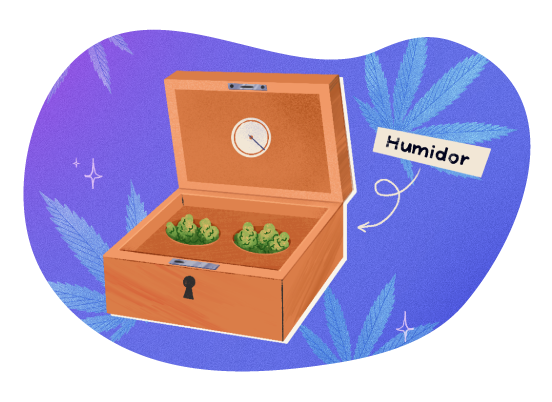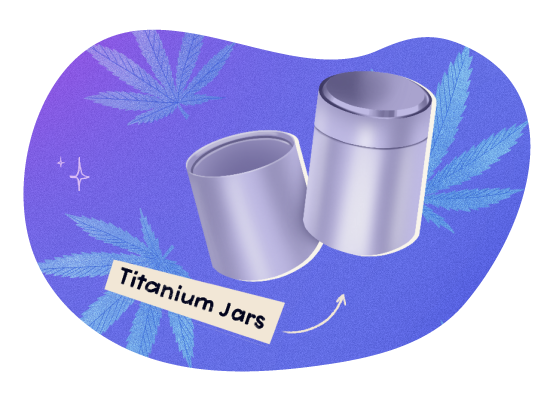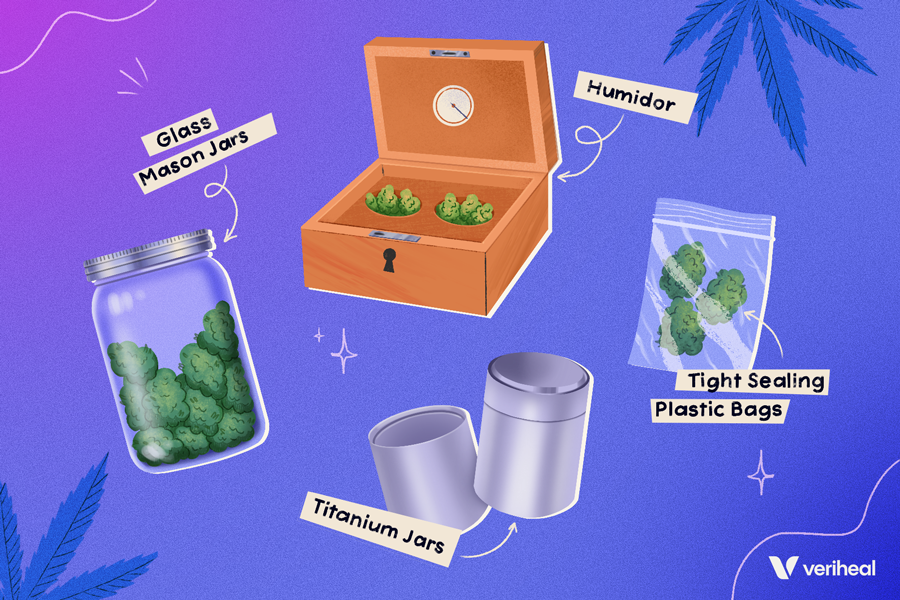Key Takeaways:
- Properly storing cannabis is essential to maintain its quality, potency, and flavor.
- Factors like temperature, light, air, and humidity can affect the shelf life of cannabis.
- The ideal storage conditions include a cool, dark, and dry place.
- Glass jars, tight-sealing plastic bags, humidors, and titanium jars are recommended storage containers.
- Avoid storing cannabis in the freezer or refrigerator.
- Joints, cannabis-infused foods, tinctures, and concentrates should also be stored properly to maintain their integrity.
Storing cannabis correctly is paramount to preserving its quality, potency, and flavor. To ensure that your cannabis remains fresh and potent for an extended period, you must consider various factors and implement the right storage practices. In this article, we’ll explore the importance of proper cannabis storage and provide you with valuable tips to optimize its longevity.
Why Proper Cannabis Storage Matters
Improper storage exposes cannabis to unfavorable conditions such as high or low humidity, extreme temperatures, light, and air. These elements can gradually diminish the quality, potency, and flavor of your cannabis over time. While cannabis flower doesn’t have an expiration date, its quality can significantly decline if not stored correctly. By appropriately curing and storing your cannabis, you can maintain its stability for up to two years. During storage, it is crucial to regulate temperature, humidity, and exposure to air and light to prevent issues like mold and mildew growth.
Optimal Storage Practices for Cannabis
The golden rule of cannabis storage is to keep it in a cool, dark, and dry place. Consider the following factors for optimal storage conditions:
Temperature Control: High temperatures can diminish the natural terpenes and dry out the buds, leading to an unpleasant flavor and harsh consumption experience. To prevent mold and mildew growth, it is recommended to store cannabis below 74 degrees Fahrenheit. Ideally, maintain a temperature of around 65 degrees Fahrenheit for optimal preservation.
Shield from Light Exposure: Ultraviolet (UV) rays can rapidly degrade cannabis. It is crucial to store your cannabis away from direct light sources. If you must store it in a non-dark environment, consider using opaque containers or cover any light-exposed areas with stickers or tape.
Minimize Air Exposure: Oxygen can gradually degrade cannabinoids and terpenes present in cannabis. To protect your cannabis from excessive air exposure, ensure you store it in an airtight container. Exposure to air and light can cause the conversion of THCA into THC and then into CBN, a compound known for its sleep-inducing properties.
Maintain Proper Humidity: Maintaining optimal humidity levels is vital for preserving cannabis. High humidity can lead to mold and mildew, while low humidity can result in dried-out buds and degradation of cannabinoids and terpenes. Aim for a relative humidity level between 54 and 63%. Products such as Boveda humidity packs can help maintain the ideal humidity levels.
Identifying Cannabis That Has Gone Bad
It’s essential to regularly check the condition of stored cannabis to ensure its freshness. Signs of cannabis degradation include a dry and dusty appearance, mold or mildew growth, and a significant loss of potency, flavor, and overall quality. By keeping a close eye on these indicators, you can promptly identify cannabis that has gone bad and take appropriate action.
Optimal Storage Containers for Cannabis
While there isn’t a perfect storage container for cannabis, some options prove more effective than others. Consider the following recommended containers:
Glass Mason Jars:
Glass jars with metal lids provide a complete seal, making them airtight and suitable for cannabis storage. However, remember to store them in a dark place to minimize light degradation.
Tight-Sealing Plastic Bags (Temporary Storage):

For temporary storage, tight-sealing plastic bags can be used. Ensure a tight seal and minimize agitation to prevent static electricity from affecting the buds. However, it is advisable to transfer cannabis to a more suitable long-term storage medium as soon as possible.
Humidor:

Humidors, typically designed for storing cigars, pipe tobacco, or dried marijuana, are humidity-controlled boxes. To preserve the flavor of your cannabis, use a humidor specifically designed for cannabis storage and avoid compromising its taste.
Titanium Jars:

Titanium jars are a viable alternative to glass containers. They minimize light exposure while effectively preserving the flavor of your cannabis.
Avoid the Freezer and Refrigerator:
Both the freezer and refrigerator should be avoided for cannabis storage. Extreme temperatures and increased humidity levels within these appliances can damage the buds and significantly affect their potency, flavor, and overall effectiveness.
Proper Storage of Cannabis Products
In addition to storing cannabis flower, it is equally crucial to store other cannabis products correctly to maintain their integrity:
Joints: Rolled joints are susceptible to the same degradation factors as dried flower. Store joints in containers like “doob tubes” or any other airtight containers.
Cannabis-Infused Foods and Beverages: Refrigerated cannabis-infused products should be stored in the refrigerator. For edibles like gummies, store them in their original container or transfer them to an airtight Tupperware container, ensuring a cool environment.
Tinctures/Oils: Tinctures can be stored in their original airtight containers at room temperature for several months without significant potency loss.
Concentrates: Store concentrates in airtight glass containers. Refrigeration is recommended to preserve their flavor, potency, and consistency. If refrigeration is not possible, ensure they are stored in a dark, cool environment.
Conclusion
Proper storage is vital for maintaining the quality, potency, and flavor of cannabis. By considering factors such as temperature, light, air, and humidity, you can extend the shelf life of your cannabis and ensure an enjoyable and consistent experience. Remember to choose suitable storage containers like glass jars, tight-sealing plastic bags, humidors, or titanium jars, and avoid using the freezer or refrigerator. Additionally, pay attention to the storage requirements of cannabis-infused products, including joints, edibles, tinctures, and concentrates. By implementing these best practices, you can optimize your cannabis storage and enjoy the full benefits of your favorite strain for an extended period.
FAQs (Frequently Asked Questions)
Q1: How long can properly stored cannabis remain stable?
Properly cured and stored cannabis can remain stable for up to two years. However, it’s important to regularly check the condition of stored cannabis to ensure its freshness.
Q2: Can extreme temperatures affect the quality of cannabis?
Yes, high temperatures can diminish the natural terpenes and dry out the buds, resulting in an unpleasant flavor and harsh consumption experience. It is recommended to store cannabis below 74 degrees Fahrenheit to prevent mold and mildew growth. The ideal temperature for storage is around 65 degrees Fahrenheit.
Q3: How does light exposure impact cannabis?
Light exposure, especially UV rays, can rapidly degrade cannabis. It’s crucial to store cannabis away from direct light sources. If storing in a non-dark environment, use opaque containers or cover light-exposed areas with stickers or tape.
Q4: Why is minimizing air exposure important for cannabis storage?
Oxygen can gradually degrade cannabinoids and terpenes present in cannabis. To protect your cannabis from excessive air exposure, store it in an airtight container. Exposure to air and light can convert THCA into THC and then into CBN, a compound known for its sleep-inducing properties.
Q5: What is the optimal humidity level for storing cannabis?
The ideal relative humidity level for cannabis storage is between 54 and 63%. High humidity can lead to mold and mildew growth, while low humidity can result in dried-out buds and degradation of cannabinoids and terpenes.


